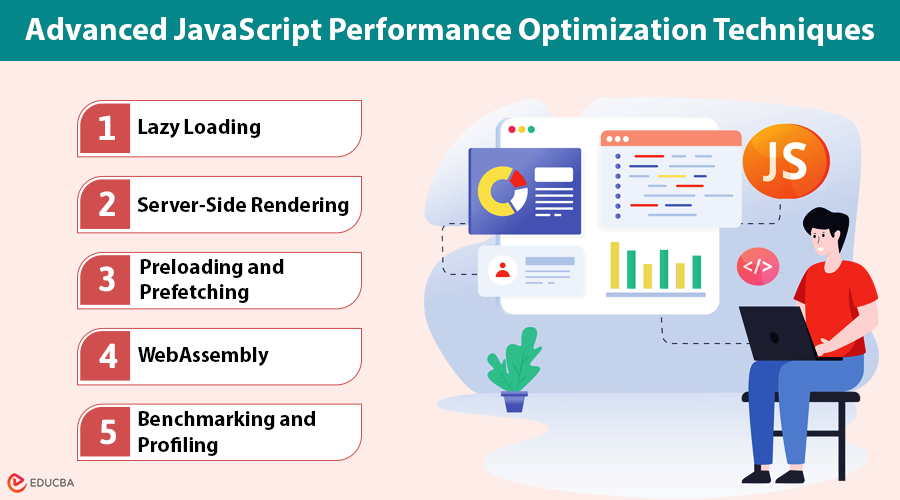Educba
2M
32

Image Credit: Educba
JavaScript Performance Optimization
- JavaScript performance optimization is crucial for creating fast and responsive web applications that retain user engagement.
- Asynchronous programming is a powerful technique in JavaScript to handle multiple tasks simultaneously, ensuring better performance.
- Promises, Async/Await, and the Event Loop are key concepts that optimize JavaScript code execution and keep the app smooth and responsive.
- Web Workers aid in running scripts in the background, maintaining interface responsiveness, while proper error handling prevents app crashes.
- Optimizing load times through techniques like minification, code splitting, and CDN usage can significantly enhance user experience.
- Best practices for JavaScript optimization include avoiding memory leaks, optimizing loops and recursion, and minimizing DOM manipulation.
- Advanced techniques like lazy loading, server-side rendering, and WebAssembly can further boost app performance and user experience.
- Benchmarking and profiling tools like Chrome DevTools help identify performance bottlenecks in JavaScript code for optimization.
- Experimenting with various optimization methods can lead to a better performing web app, ensuring success in a competitive market.
- JavaScript performance optimization guide provides insights into enhancing website speed and efficiency, promoting better web development practices.
Read Full Article
1 Like
For uninterrupted reading, download the app